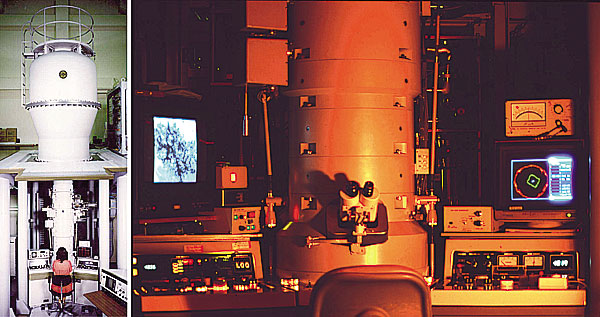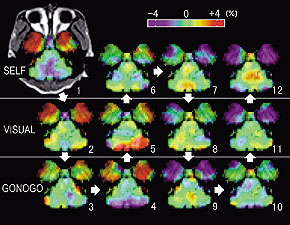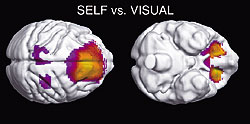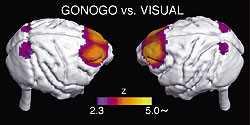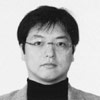|
|
|
CENTER FOR BRAIN EXPERIMENTSection of Brain Structure
|
Section of Brain Function
|
In order to investigate the brain mechanism underlying our mental ability such as cognition, voluntary movement, thinking, or will, we have to experiment on the human brain. Some non-invasive techniques for measuring brain are certainly useful for the purpose. However, they are still insufficient in the quality of information. To overcome the limitations, researches on the brain are carried out here in both the human and monkey subjects using various techniques including direct recordings of cortical field potential, magnetoencephalography, and positron emission tomography.
|
Section of Information Processing
(Two-photon microscopy)
|
i) Two-photon microscopy imaging group ii) Computer & Network group |
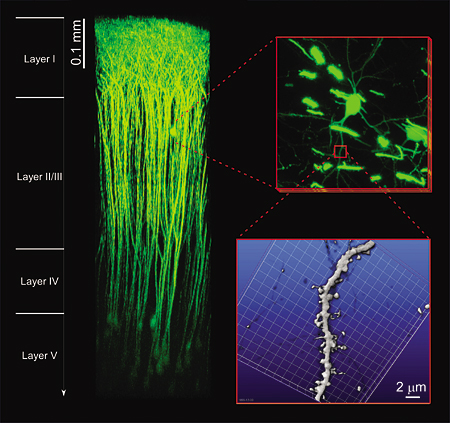 |
| Figure 1. "In vivo" two-photon microscopy. Superior tissue penetration enables us to monitor neural activity and morphological changes of cells in a brain of a living mouse. Our newly constructed "in vivo" two-photon microscopy can detect fluorescent signals from deeper layers than 0.9 mm from the surface of the brain cortex, so that we can reach neurons in all the layers of the cortex in a living mouse. (Collaborative research with Prof. Junichi Nabekura) |
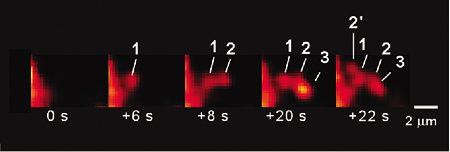 |
| Figure 2. Sequential exocytosis. The deep tissue penetration of two-photon excitation imaging has revealed sequential progression of exocytosis deep into the cytosol in exocrine glands. Now, such sequential compound exocytosis have been found in various kinds of cells, suggesting that it is a general and effective mechanism for physiological secretion (Nature Cell. Biol., 3: 253, 2001). |
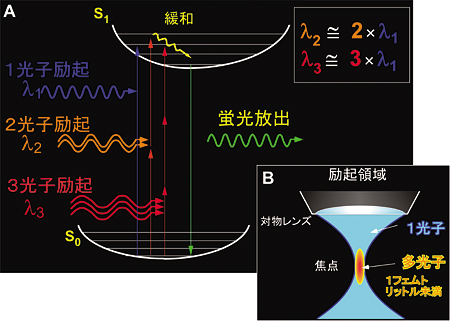 |
| Figure 3. Multi-photon excitation process.Using near infrared femto-second laser, multi-photon excitation of molecules can be elicited by simultaneous absorption of photons (A) at the focal point of an objective lens (B). Two-photon excitation imaging has deep tissue penetration, little out-of-focal light absorption and least phototoxic effects. Thus, it is most suitable for investigating molecular and cellular events within thick intact tissues. In addition, it allows simultaneous multi-color imaging and fluorescence correlation measurement. For example, fusion pore opening and its dynamics can be resolved of a nanometer order by two-photon microscopy (Science, 297:1349, 2002, EMBO J, 25:673, 2006). |
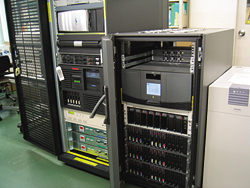 Figure 4. Information processing system |
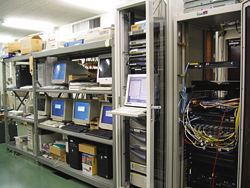 Figure 5. Cluster of network servers |
|
|
|
| Copyright(C) 2006 NIPS (National Institute for Physiological Sciences) | |
